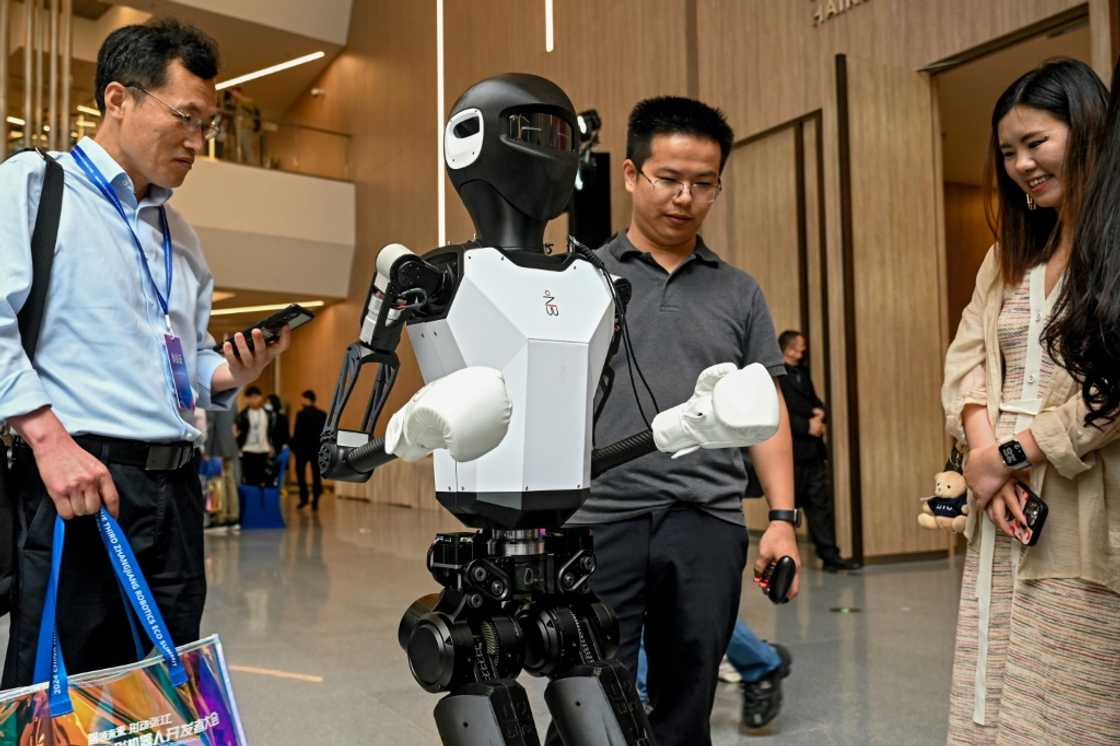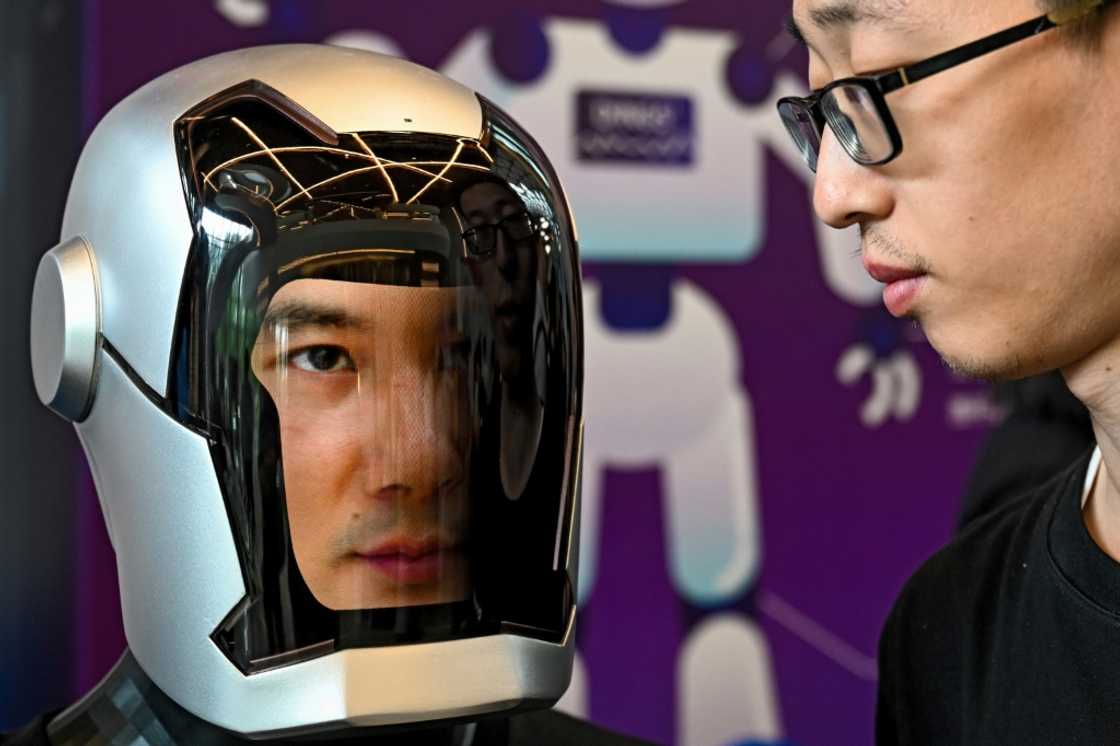Chinese robot developers hope for road out of 'uncanny valley'

Source: AFP
A disembodied woman's head mugged and grimaced, aping the facial expressions of a user on a nearby laptop as visitors to the China Humanoid Robot Developer Conference watched in fascinated unease.
The wide, slightly frantic eyes left no doubt the technology was firmly in "uncanny valley" territory but the field is nonetheless attracting increasing attention in China, both from investors and the government.
Outside the conference meeting rooms on Thursday, around 30 companies displayed bionic hands, flickering faces and bipedal robots that stomped around the room, steadying themselves when demonstrators knocked them off balance.
"I feel the humanoid robot industry is booming... These displays are no longer just concepts. Many of them are already physical and interactive," visitor Jiang Yunfei told AFP.

Source: AFP
A crowd gathered at a demonstration for Fourier Intelligence, which has started mass production of its GR-1 bipedal robot in what it says is a world first.
Chinese President Xi Jinping met Fourier's leaders on an inspection tour in Shanghai in December, a sign of the growing importance the central government has assigned to emerging technologies such as robotics.
Fourier's founder told the South China Morning Post that Xi had asked whether it was possible to talk to the bipedal robot and get it to perform basic tasks.
Beijing is not the only interested party.
"These will be widely in use in two or three years," an optimistic investor told AFP, gesticulating at a similar robot manufactured by a different company.
He said he expected them to be mainly used to take care of the elderly, a function some see as vital as China's huge population ages and care options dwindle.
At the disembodied head booth, the team said their ultimate goal was to make impersonal robots such as the GR-1 seem more human.
"We hope that they can enter the household service industry," said Zhu Yongtong, a member of the Shanghai DROID ROBOT team.
Another company's attempt at humanisation was to equip robots with visors that projected video-generated eyes.
"As a parent, you can implant your own digital doppelganger image into this robot to make a presentation, which will allow this robot to have a friendlier human-robot dialogue with your child," Ennio Zhang, marketing and sales director of GravityXR, told AFP.

Source: AFP
The mood at this week's conference was optimistic, with sights set firmly on the future.
"I think China's humanoid robots have developed to a very cutting-edge position and can compete with other manufacturers in the world," said a 27-year-old visitor surnamed Wang.
"Now a lot of robots still look 'clumsy', they still look like robots, but once we collect a lot more data... the robot will become more and more humanoid," said Jiang.
Source: AFP



